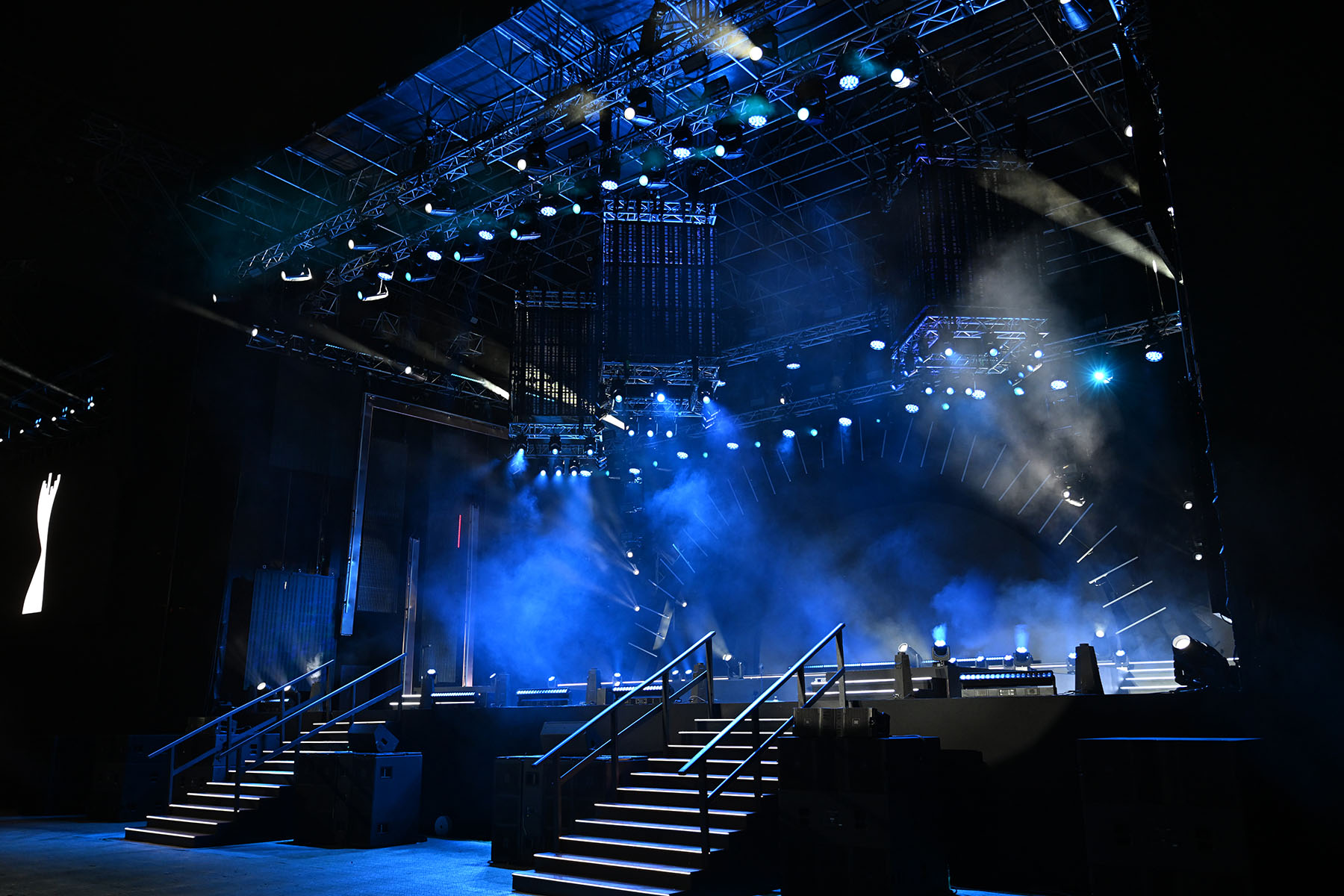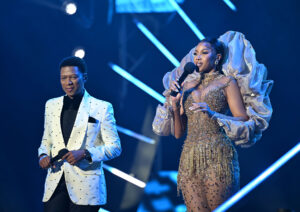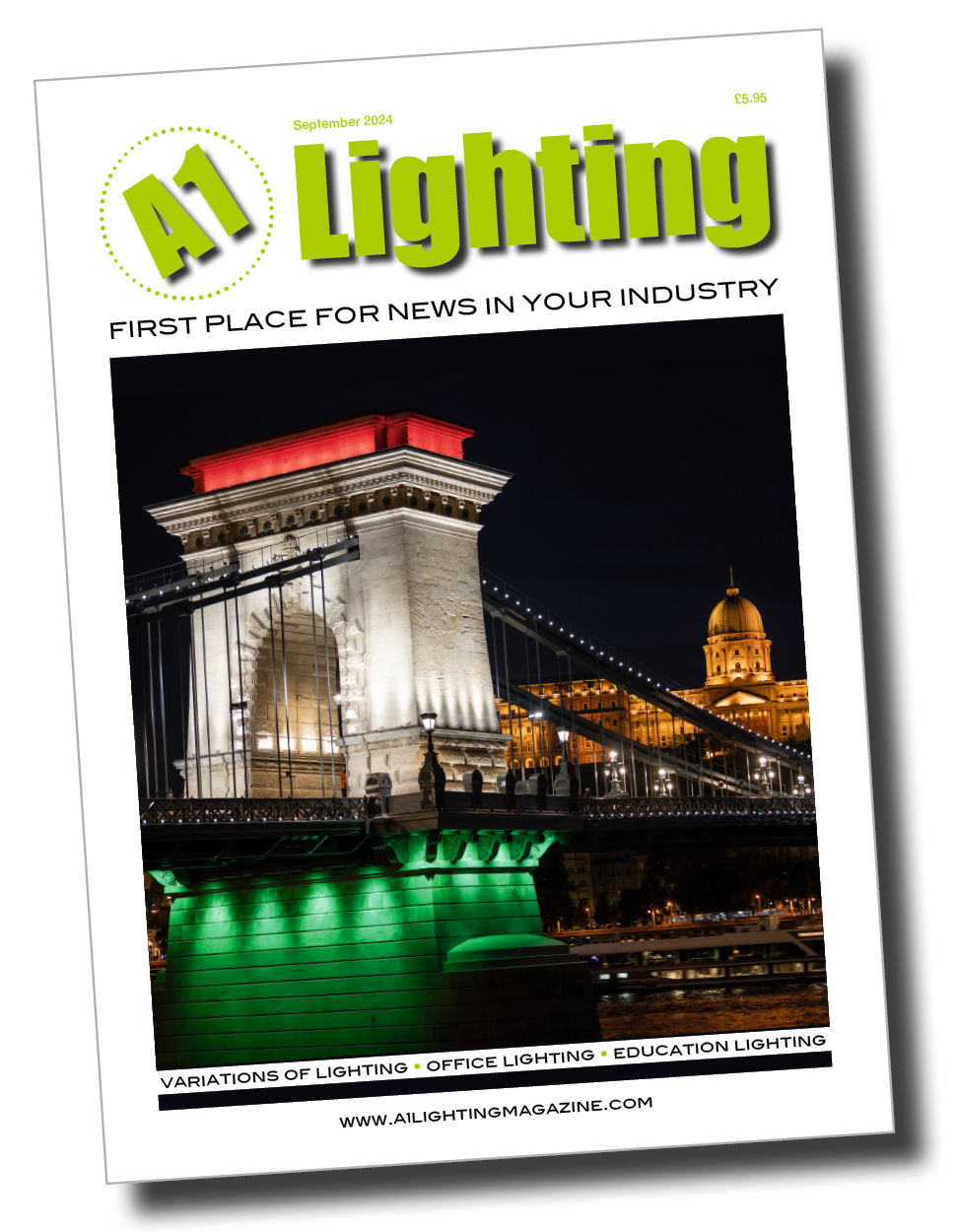
2024 was the second year that South African lighting designer Renaldo van den Berg has lit the prestigious Metro FM Awards, which is a leading celebration of African musical talent and creativity.
Renaldo specified over 200 Robe moving lights to ensure that the high-energy-high-profile live broadcast on SABC was enjoyed by a massive TV audience as well as several thousand excited music fans catching the action in Mbombela Stadium in Nelspruit.
This year, 19 sizzling hot Awards were presented, with the lifetime achievement award going to Oskido, and multiple live performances followed the Awards, with a full-on festival-style concert offering another glittering line up of Africa’s finest.
Johannesburg-based MGG Productions supplied a full technical, structural and set solution and Renaldo collaborated closely with MGG’s technical stylist and project manager, Tamsyn Strydom, to imagine an epic production design for their client, the agency Dzinge Productions.
This year’s Metro Awards theme ‘Black to the Future’ offered plenty of creative scope.
Tamsyn and Renaldo received a brief from their client, Shandu Nesengani MD of Dzinge Productions, regarding the look and aesthetic he wanted to achieve, which was slick and futuristic.
They proposed a series of complementary geometric shapes created with LED video elements which set the architectural parameters and assisted the narratives by showing tailored content, and the set developed from that base idea.
When it came to lighting, Renaldo has always been a big fan of Robe products and like many in South Africa, he’s grown up with the brand which has had a strong presence thanks to the proactivity and hard work of distributor, DWR Distribution.
“We needed bright fixtures to punch through the numerous LED screens, and feature-rich lights with multiple options to keep the energy pumping and ensure that all the segments looked different and distinctive,” he explained.
Shandu was keen on having a progressive and unique portal appearance, so Tamsyn and Renaldo created several different ‘worlds’ within their defined stage space and decided on the very ‘technical’ look for the broadcast space.
Three double-sided triangular screens were flown above mid-stage, and upstage at the back was a masked semi-circular screen. An array of 5 x different sized LED columns were hung on both sides of the stage at different heights, and all the surfaces were of different pitches for added texturing.
Having worked on several projects with MGG, Renaldo knows their inventory which includes hundreds of Robe products purchased via steady investment over the years.
He started with key lighting.
“I knew that ESPRITES were available and that was great for quality light output, intensity and power, plus the excellent shuttering system, all of which were exactly what I needed,” he commented.
Twenty-eight ESPRITES were dotted around the overhead trusses.

Renaldo then chose Robe BMFLs – a combination of Blades, WashBeams and Spots – for his secondary keys and specials – utilising 38 BMFL fixtures in total. “BMFL is still one of my favourite moving lights,” he enthused.
Once the screens were all in place, the lighting positions were calculated so the ESPRITES and BMFLs could light from behind or across the whole set, and also function well for additional effects and looks capturing the action.
They specifically paid attention to multiple camera angles and how to fill the back-of-shots with both lighting and video, explained Renaldo, “We focussed on creating big, beautiful production shots and close up detailing, taking inspiration from broadcast and live show production visuals.”
Renaldo worked in tandem with Watchout operator Dylan Findlay who was outputting all the screens content, which was mostly supplied by the producers, to make sure that lighting would support or contrast the video content at any given moment.
He chose Robe’s Spiider for his primary wash lights: “They are reliable and predictable in terms of lighting characteristics, so overall great fixtures!” As they can be pixel mapped, he could programme and run corresponding sequences to match with the video effects at specific times.
In between the triangular screens were lighting ladders rigged with 16 MegaPointes and 24 Pointes which enabled an abundance of different scenes, looks that transformed the stage and set looks. They were positioned at different heights to enhance the depth of the whole space.
“I programmed a number of different layers of lighting that I could grab and mix into the bigger pictures, and into the large production scenes, some of which I needed to create on the fly,” he stated, alluding to the pressure and fast pace of this broadcast.
For set and performer dressing, 20 Robe Tetra2 moving LED battens were deployed on the floor and these helped merge the stage with the LED screens. The pixel map-ability of the Tetra2s helped this plan, and Renaldo ensured that there was always some content running through the Tetra2s even if extremely subtle.
“They really pack a punch and are also great as side lights,” he commented.
Thirty-six LEDBeam 350s lined the two ramps, grouped in clusters of three and on the deck for dressing. “I needed something small and unobtrusive that could be tucked in amongst the presenters and guests.”
The lighting was designed and programmed so all angles were covered with plenty of movement, colour changing and other kinetic effects for the camera positions to feast on.
Another major objective was to ensure that the long shots really captured the scale and stature of the stage and the substance and impact of the design. “It’s an outdoor stadium show, and it needed to have that grand sense of occasion,” underlines Renaldo, adding, “All these Robe products worked brilliantly in helping to achieve this goal.”
While Robe moving lights were the main fixtures, the rig which also had some strobes, moles and other linear LED battens, adding up to a total of 40 DMX universes running via a grandMA full-size console.
The challenge was balancing all the design elements that were technically driven by it being a large broadcast event in a dynamic live show environment … that needed to be controlled enough to work for TV.
“It was all about finding equilibrium between the live, live broadcast and staging in a big outdoor venue element,” concluded Tamsyn. “I wanted an impressive overall look that translated for all media, and that also worked when cutting to close ups and SFX,” for which she and Renaldo worked closely with camera director Leticia Masina and the team from the SABC.
On site, the lighting team was co-ordinated by MGG crew chief Lefeti Kambile who did a fantastic job of ensuring that the build process was efficient and well organised.
All of this great teamwork brought spectacular results and another Metro FM Awards show for everyone to remember.
Photos: Siphiwe Mhlambi.













